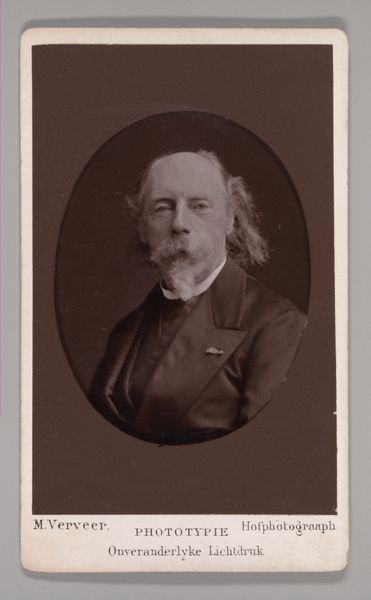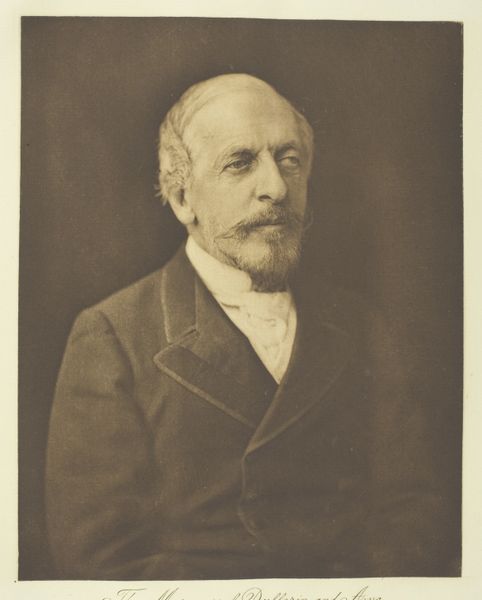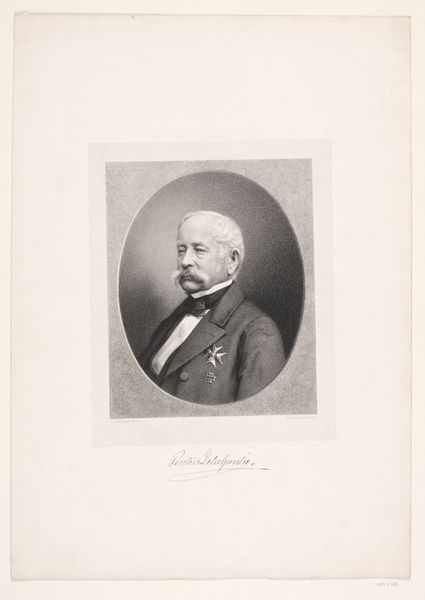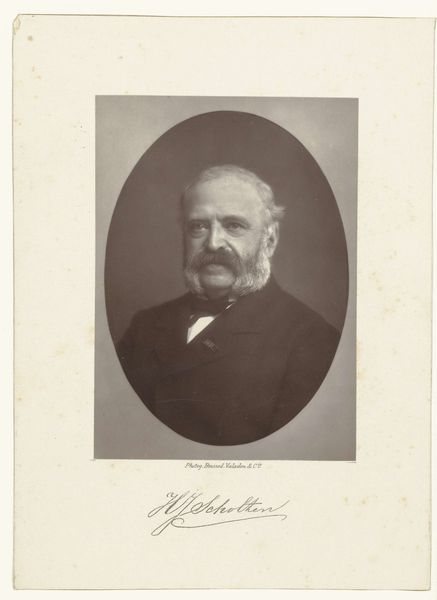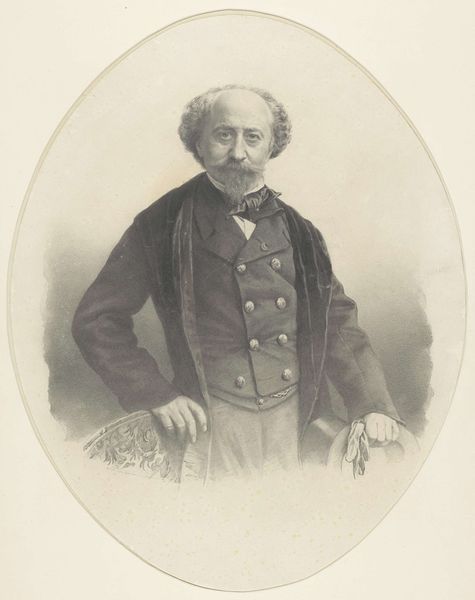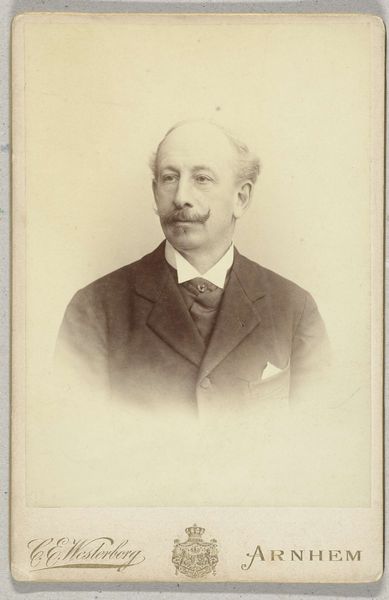
photography, gelatin-silver-print
#
portrait
#
photography
#
historical photography
#
gelatin-silver-print
#
realism
Dimensions: height 117 mm, width 84 mm, height 189 mm, width 132 mm
Copyright: Rijks Museum: Open Domain
This photographic portrait of Chr. Bisschop was made by Maurits Verveer, though the exact date is unknown. Think about what’s required to make a photograph like this. First, a plate of glass is carefully coated with light-sensitive emulsion. The subject must sit perfectly still for an extended period. Then, the plate is developed using chemical solutions, coaxing the latent image into view. It’s then printed, likely on albumen paper, made with egg whites to give it a glossy surface. Finally, the print is mounted on card stock, giving it stability and presence. Consider the labor involved in each stage, the skilled technicians needed to operate the equipment, and the global trade networks that supplied the materials. Photography in this period wasn’t just about capturing an image; it was a complex industrial process, one that democratized portraiture while still demanding significant resources and expertise. When we appreciate photography as a crafted object, we recognize that its meaning isn’t just in the image, but also in the making.
Comments
No comments
Be the first to comment and join the conversation on the ultimate creative platform.

